I'm studying the trasmission of signals though coaxial cable; I'm using a coaxial cable (of course!), an oscilloscope, a generator an some different endings. This is the scheme: 
I was told that if I use a very long cable that has impedence \$Z_0= 50 \Omega\$ and put, at the end of it, a resistor of \$47\Omega \$, the signal will be reflected.
I have obtained this:
If I have correctly understood, the height of the step pointed by the green arrow is the half of the V given by the generator.
I can't understand why the step pointed by the red arrow is shorter than the one that is on the other side. And I can't understand what's the physical meaning of the step pointed by the red arrow.
Then, I have terminated the cable with a short circuit and I have obtained this:
Could you explain me what's up at the points indicated by the two arrows and the yellow and red points?
Then, I have terminated the cable with a resistor of 100 ohm and I have obtained this:
Could you explain me, why the step pointed by the green arrow is higher than the step pointed by the red arrow?
This is the last image:
